This is one area where most new hikers make the most mistakes and really sour up their first hiking experience. They come home with sore backs, blistering and swollen feet and hopefully, high spirits and creative minds. For some, this is their first and last hiking trip, and for most other new hikers it’s a fun story to say at a campfire.
If only they did a bit of quick research to know how much they should’ve carried, they would’ve had a better first time hiking. That’s why we researched the topic, and hopefully we’ll save you from a lot of that “first-hike” frustration with this post.
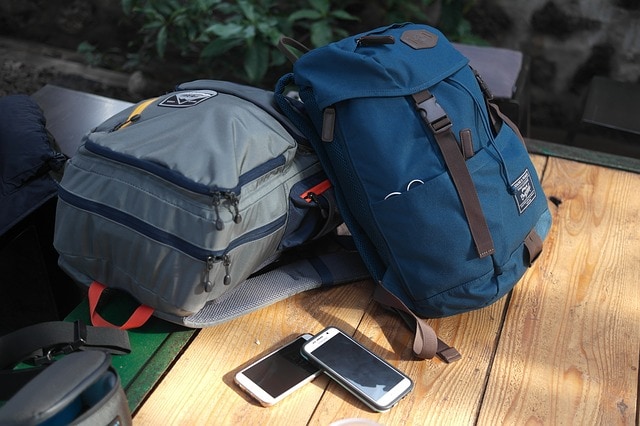
How Much Should Your Backpack Weigh?
The answer is: not more than 20% of your body weight, and ideally, it’ll be about 10% of your body weight. If you weigh 200 lbs, you’d be fine with carrying 40 lbs for a day hike. If you’re 160 lbs, you’d be okay with a ~30 lbs pack.
These packs are a bit heavy, and you’ll definitely feel the weight after 10+ miles. That’s why in an ideal world, you’d be carrying the lightest available packs that weigh about 10% of your body weight.
For a 200 lbs person, that would be the humble 20 lbs backpack, and for someone weighing 150 lbs, that would be a ultralight 15 lbs pack.
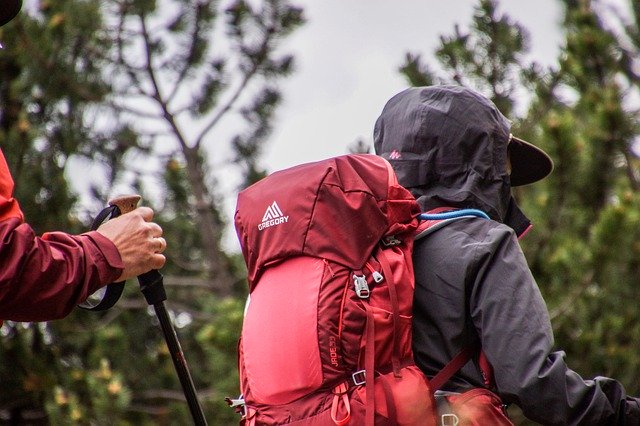
These are hard numbers to achieve in the backpacking world, and in the real world we’re best served with pack weights from 20 lbs to 30 lbs.
There have been hikers that carried 50-60 lbs on their hikes; naturally they survived but that’s a lot of weight that they didn’t really have to carry. Carrying heavy gear often might lead to hip, knee and back problems, while hiking under a normal load is generally healthy.
Most US soldiers have a pack weight of about 80 lbs to a grueling 140 lbs; and no soldier ever liked lugging around all that weight, no matter the distance. Due to this weight, most soldiers suffer from knee and back problems after their service.
Backpack Weight Distribution
It’s important to know how to distribute the things you pack in your bag, as this will effect how comfortable you’ll be on the trail.
If you don’t optimize your backpack, you’ll spend a lot of time taking everything you packed out, camping, and then haphazardly returning everything to the pack. Unpacking isn’t an issue when you do it on your living room floor, but unpacking in the wild and in low light situations isn’t something most people enjoy.
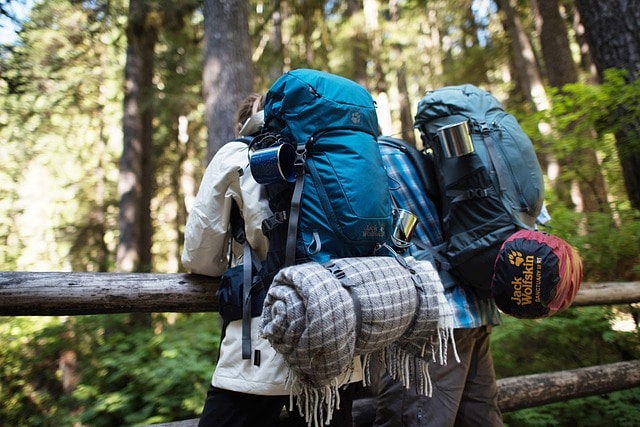
Put these items on the bottom: Big, soft items that you’ll use at camp here. Your sleeping bag and sleeping pad, sweater or hoodie, tent, and stove should be on the bottom of your bag.
Put these items in the middle: Big, firm items that you don’t often need go in the middle, such as food, cooking kit, bear canister, and anything else that’s relatively firm.
Put these items on top: Any items that you might need often, or in an emergency, should go to the top of your pack – your best hunting knife, raincoats, rain jackets, toilet paper, maps, GPS, water bottles, etc.
Put these items in pockets: Any items that are too important to go into the backpack should be in your pockets, backpack pockets, or your belt. A can of bear spray, your smartphone, map, GPS, water bottle, washcloth, etc.
Items to hang on your backpack: Avoid hanging items on your backpack if possible. Even very light items, like a sunglasses case, will make an annoying noise or has a higher chance to get tangled in tree branches. Heavier items, when hung on a backpack, will affect the way you walk, and you might feel especially sore after walking for 15 miles. Some big and long items like trekking poles, tent poles, rope and camp stools are too big to fit into a backpack, and can be fastened to it.
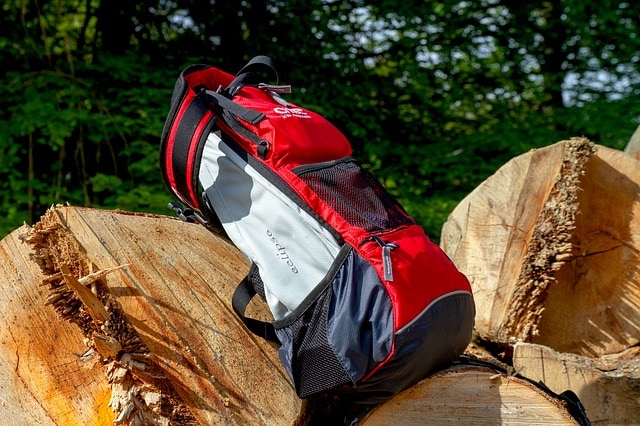
Types of backpackers, sorted by pack weight
There are three types of backpackers: ultralight, lightweight, and regular backpackers.
Ultralight backpackers are the real hiking enthusiasts that pride themselves on going fast and having the lowest weight backpacks (about 10 lbs). Their gear is, on average, more expensive than regular weight gear due to the premium weight saving materials used.
Lightweight backpackers carry about 20 lbs in their backpack. Most experienced hikers go lightweight, simply because they figure out what they don’t need to take on a hike. It’s a matter of personal preference, and you’ll eventually figure out what you can leave behind.
Regular backpackers have packs that weigh about 30 lbs. They’re generally newcomers to the hiking hobby, and they have a tendency to overpack. If you’re a newcomer going backpacking for the first time, it’s a good idea to never exceed 40 lbs and go with an experienced friend or a group of hikers.
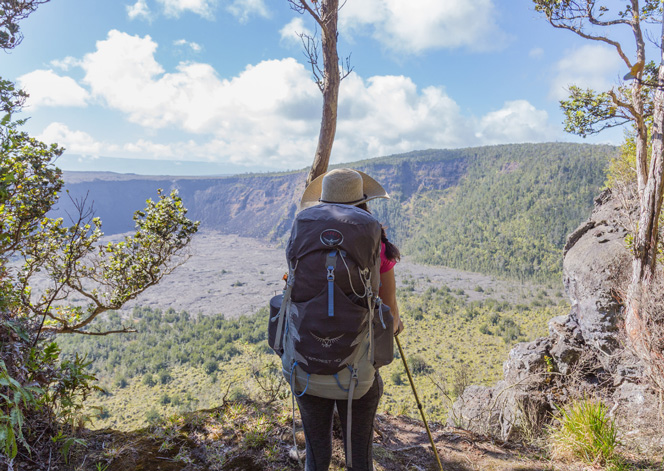
How to hoist your backpack
How to properly pick up your heavy hiking backpack is something most experienced hikers forget to explain, as they picked it up by watching other experienced backpackers. Newcomers usually yank the loaded, heavy backpack off the ground by the shoulder strap, and they put undue stress on the shoulder strap. This will eventually lead to your shoulder strap tearing off the pack.
The proper way is to use the little loop on the top of your pack (it’s called a haul loop) to bring it up to your thigh, and then use the shoulder straps to put it on. The haul loop is a lot sturdier and can take a lot more abuse than a shoulder strap, even if it looks small and thin.
If you’re with a friend, your friend can pick up the pack using the haul loop, and help you put it on. These backpacks are usually heavier than they look, so please take your time and lift them slowly.
Backpacking tips
Buy a scale
A scale doesn’t lie, and you should weigh all the items you’ll carry on your trip, and weigh your backpack before setting out. If you’re carrying more than 30 lbs, please reconsider what’s really important and try cutting something out, if possible.
Waterproof your things
If you can, buy a waterproof backpack, or get a dry sack or two to keep your stuff safe. Nobody wants to sleep in a wet sleeping bag, or lose a $600 smartphone to water damage.
Zip lock bags are a quick and safe way to keep some items dry. You can use multiple zip lock bags, or one big zip lock.
Buy a backpack that fits your frame
Measure your torso length and your hips, and buy a backpack that fits your frame. This will properly distribute the weight of the pack. If you get a backpack that isn’t quite right, you’ll feel discomfort when you carry a full pack.
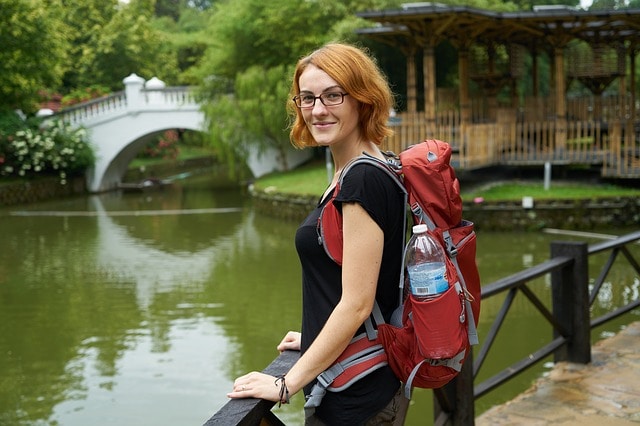
Backpack capacity
Backpack capacity is measured in liters. Your regular school bag might be about 20-30 liters, and naturally doesn’t fir much in it. Most backpackers use 40 liter backpacks, which are big enough to fit almost everything they carry.
There are bigger 60-70 liter backpacks, but they’re best reserved for people that are backpacking in colder climates or mountaineers. Most newcomers buy the biggest backpack and fill it up with backpacking gadgets and gear they might not need.
Keep everything tightly packed
The tighter your gear is packed, the less it will shift and wobble while you walk. All that shifting will effect the way you walk, and will tire you out quicker.
Go ultralight where you can
If you can, you should try changing out your regular gear for ultralight options. They’re more expensive, but they shave off precious pounds off pack weight.
Not only are they lighter, but they’re made out of high-quality, cutting edge materials that last for quite a while compared to regular gear, but they’re outside of most regular hiker’s budgets.
This doesn’t mean you should cut food, water or fuel out of your pack; go for ultralight gear like UL tents, backpacks, sleeping bags, stoves and other gear, don’t skimp out on essential items like a first aid kit, a good map of the area, and other essential gear.
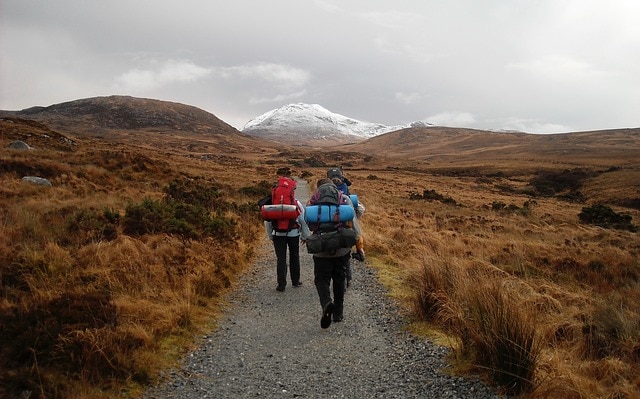
Experience helps you cut weight out of your pack
After you’ve been on several hikes, you start to develop your own specific taste for what you want. Some people prefer hammocks to tents, some people like having a small inflatable pillow for extra comfort, and others go without a stove and eat dehydrated meals.
You’ll figure out what you can cut out, and you’ll also figure out what you can’t go without. We suggest that you keep experimenting and you might just find something that you’ll never hike without again. That’s how most people find out about boot gaiters.
Share the weight among fellow backpackers
If you’re hiking with friends, you can share the weight of tents, stoves and stove fuel, food and water. This lets a group be more efficient with their weight, as one big 6-person tent doesn’t weigh as much as 5 small tents.
